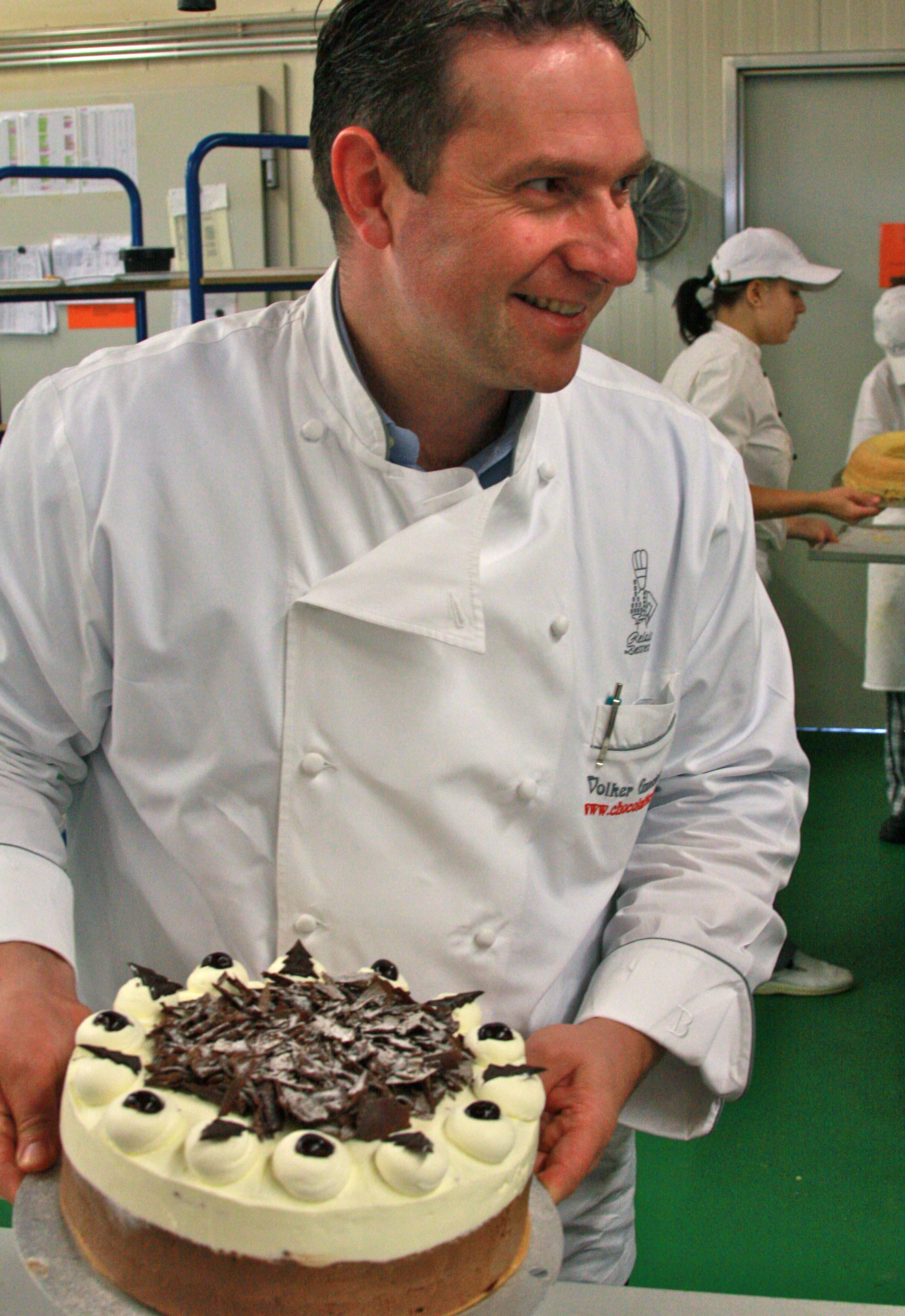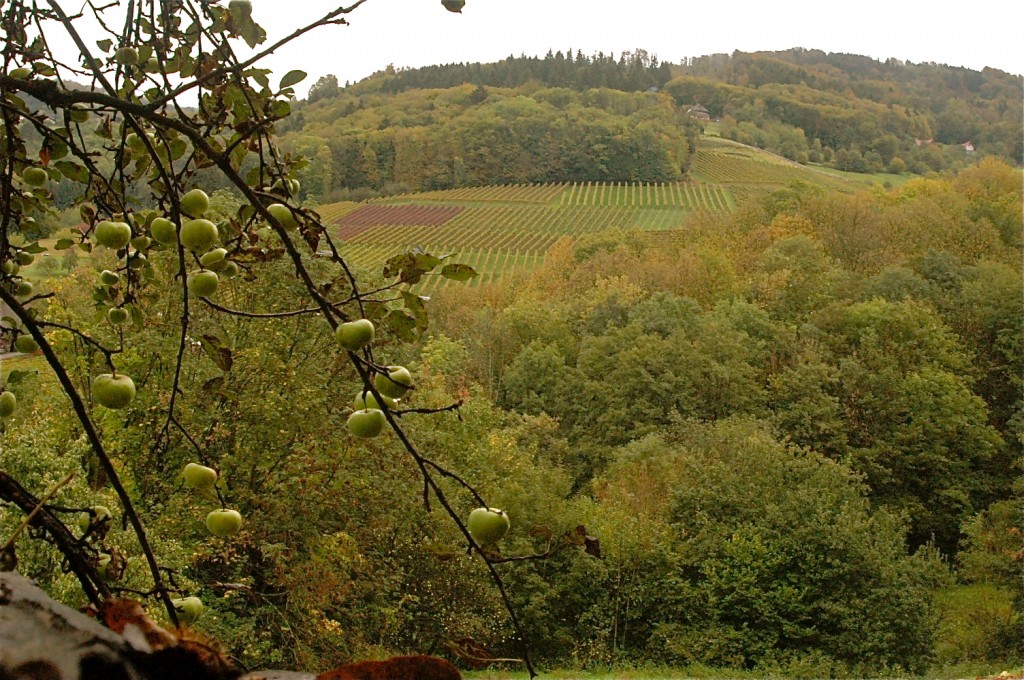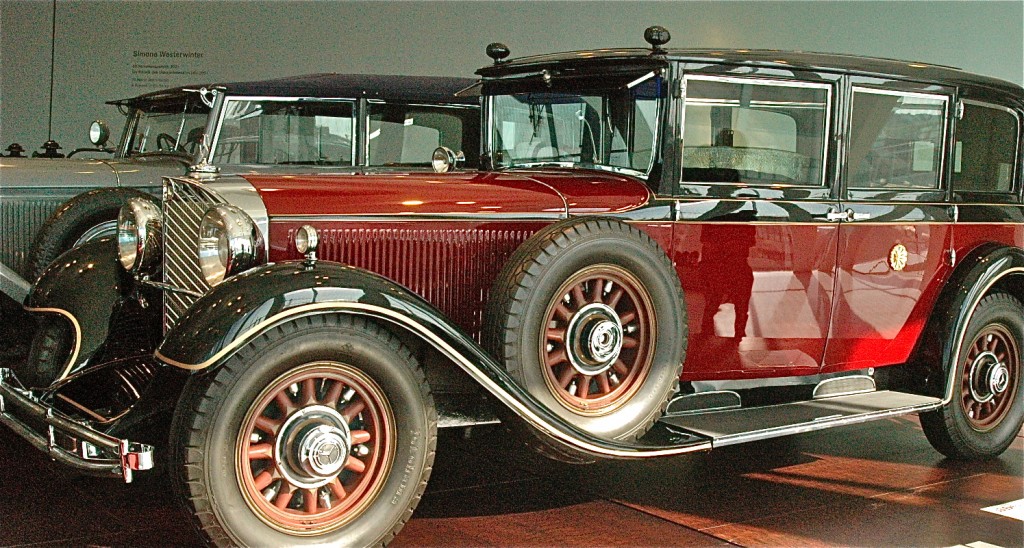Travels with Julia || Southern Germany
Traveling through southwestern Germany recently, I thought I could have been in France or Italy’s wine-growing regions. But then, Baden-Württemberg (the two states merged to form one in 1952), the region’s official name, was once in the duchy of Swabia, a swathe of land that included parts of France and Switzerland. Today, it shares its borders with both countries and the French connection endures.
There are nine Michelin-starred restaurant-hotels in this important fruit- and wine-growing region and they are all family-owned (as such establishments have been for centuries–tradition is important here). But if the chefs are French-trained and the veal is blanquette, not schnitzel, the feel is unmistakably German (let’s forego the argument for now that the origins of that revered dish are really Italian [cotoletta alla milanese]: whoever it was who put the first egg dip and breadcrumb to a cutlet of veal, the dish has prevailed in Teutonic parts long enough to become naturalized). Still, you ought not let the locals hear you lump them in with the rest of their countryfolk. They will tell you that in South Germany, there is a joie de vivre that dims with the sun the further north you go.

Jörge Sackmann of Sackmann Hotel, one of the most luxurious resorts, Baiersbronn-Schwarzenberg Photo: Julia della Croce
It’s not surprising that on weekends, a third of patrons at the Michelin resorts are food-loving French on holiday. At the other end of the spectrum are the more affordable joints, where the traditional food and local wine is cheap and good–and where more of the locals are to be found. Many of these gasthauses are amidst the vines and fruit trees.

Waiting for lunch at Löwen’s Panoramastüble, Schwarzenberg, where only local specialties are on the menu. Photo: Julia della Croce
If some people come to the sunny side of Germany for the food and drink, others come for the romance. The low mountain range that runs through this part of the country, Schwarzwald (the Black Forest), so-named by the Romans because its fir and pine woods were too dense to let much daylight in, is peppered with castles and picturesque medieval villages. Once a hotbed for mystics, alchemists, and Grimm folk, its magic hasn’t faded.
Colorful, ancient houses cling to the sloping hillsides of alternating soft green curves and thick forests dense with conifers, and opulent palaces crown the hills. Rising in the Black Forest, the Neckar River runs nearly the entire length of the region, south to north, flowing into to the Rhine, to the west. The Danube River, the second largest in Europe after the Volga, starts here, too, and winds north through nine other European countries and five Central European capitals.

Half-timbered medieval houses on Angel Alley, Gengenbach, all have wine cellars Photo: Julia della Croce
Wine is considered a staple food here. Its history began when the Romans conquered in 50 B.C. and planted the first vines. You can drive the wine trails through this gorgeous country. There’s the Württenberg Wine Road (Württemberg Weinstrasse) beginning at Weikersheim Castle, north-east of Heilbronn, a 318-mile trail that winds through medieval villages to Heilbronn, Stuttgart, and the upper Neckar Valley, and on to Metzingen; inns along the way serve locally-made wines. The equally picturesque Baden Wine Road (Badische Weinstrasse), starting in Baden-Baden, passes through the Kaiserstuhl vineyards to Weil am Rhein for a stretch of 100 miles, with wine taverns along the way (BW Tourist Board website).
Stuotgarten (literally, “stud garden”), today, Stuttgart, began as a stud farm around 950 A.D. at the site of an old Roman fortress. Though a remarkable 200 acres of vineyards carpet its hills, this prosperous city is both ancient and modern, a vortex of art and culture with a lively night life, hip restaurants, world-class ballet and opera, important art collections, and architectural monuments that were painstakingly reconstructed after the war. The many vines, parks, and valleys, along with a characteristically German commitment to the environment make it one of the greenest cities in Europe.

Schlossplatz, Palace Square, originally the seat of the dukes of Württenberg, is the heart of Stuttgart, and the state museum. Photo: Courtesy of State Tourist Board Baden-Würtetenberg
My last visit to Germany was long ago during my first summer abroad on my own, when I went in hopes of a reunion with a handsome Bavarian boy I’d met in Rome a year earlier while under the watchful eyes of my two elderly aunts. I waited for him in the designated cafe, but he never came. It was a bitter pill to swallow, but my memories now were sweet as I plucked the delicious wursts and dumpling soups I had eaten in the student pubs, washed down with cool, foamy beer, from the far reaches of my mind.
Everywhere there was still an embarrassment of sausages, and pastries so good as to induce a permanent craving. One of my first meals on the new journey was a traditional Black Forest lunch at Martinsteinhiesli, a family-owned farm, restaurant and inn at the top of a mountain. If you’re a wurst lover, like me, here is where you’ll find house-made leberwurst, bratwurst and such, to name a few, not to mention the rib-sticking main courses that follow, including roast pork and sauerbraten, home-made spätzle and gravy, and the new wine or house ciders (also produced here), served in tumblers.

House-made hams and wursts at the Black Forest restaurant, Martinsteinhiesli, Gengenbach Photo: Julia della Croce

The exterior of the Martinsteinhiesli farm inn and restaurant in Gengenbach, foundations circa 1620 Photo: Julia della Croce
On the matter of traveling in Bavaria in general, a German-born acquaintance once pointed out that one had to appreciate the very sensible German notion to build hospitable accommodations at the endpoint of hiking trails where a person could be assured that at the end of a trek there would be a place from which to be able to see a stretch of river or chain or mountains or picturesque village. As well, she advised to make sure that there is an open terrace from which to enjoy the view and take in the fresh air and sunshine.
This is such a pleasurable notion that I feel swayed to admit that the Swabians’ earnest comparison of this part of the world with France or Italy can’t be quibbled with entirely. The only thing I might add to make the parallel more convincing is that such a respite might also have a garden or two in the vicinity of the dining room. This Lokal (inn) has one or two in view and, I suspect, a few others where the vegetables and berries grow that the kitchen turns into the pickles and jams.
Town versions are the prolific weinstuben, taverns, which offer not only drink, but respectable pub food. No tavern carries the patina of history as much as the Zum Roten Oxen, Red Ox Inn, a much loved hangout in the splendid medieval Heidelberg, described in a German guidebook as “an institution of vivacious happiness.” Heidelberg is Germany’s oldest university town (Heidelberg University was founded in 1386). Opened to business in 1703, the place has been in the Spengel family for six generations, and mirrors the city’s historical, business, and cultural life. Besides three centuries of university students and luminaries, its patrons have include the likes of Otto von Bismarck, Mark Twain, Mamie Eisenhower, John Foster Dulles, John Wayne, and Marilyn Monroe.
This copy of an old woodcut, only slightly larger than the tiny original and a gift from my American-born guide, conveys a feeling of the city more than any photograph could. Like so many other foreigners, she landed here as a student many decades ago and never left. Probably because it was a university town renown for its humanistic and progressive history, Heidelberg is one of the few German cities that was spared bombing during World War II, so much of it is remarkably intact.

Woodcut, 1537, by Sebastian Münster, scholar, artist, astronomer, astrologer, mathematician, and first cosmographer of Germany – Print courtesy of Charlotte Frey
In the Black Forest village of Sasbachwalden, on the western slopes of Mount Hornisgrinde, there is an entirely new, and unique rural alternative to the town tavern. The wine and nature lover can not only buy wine and Schnapps (a brandy-like spirit made from apples, pears, or plums) made on the premises, but also, sleep in a giant wine barrel under the stars. What once held 2,000 gallons of wine has been converted by the enterprising vintner into a well-appointed bedroom adjoining a giant barrel-bathroom in vineyards, perched on a hilltop 1,000 feet above the foothills (Schnapsbrunnen im Weinfass ). Consider this like camping and you’ll find the accommodations more than adequate. Higher expectations might disappoint. If more creature comforts are what you are after, you’ll find a surplus of fancier lodgings, from tidy bed-and-breakfasts to grand old hotels.
Besides the heady view and invigorating fresh air, the village offers adventurous eaters a novel opportunity to go “Dinner Jumping,” a local practice of eating a progressive dinner for a set fee in the many fine local eateries all at once (www.sasbachwalden.de). The idea is to begin at one place for appetizers, hop to another for the first course, another for…you guessed it, on and on (we “jumped” to five). Before you embark on this gastronomical orgy, you can, like the locals, get up at day break and go for a hike before eating a gargantuan breakfast such as the one that was included in the room price at the modest, yet excellent Hotel Talmühle that included wursts and much more, and an astonishing selection of freshly baked layer cakes and pastries.

A waitresss plating appetizers for the first stop of “Dinner Jumping”(Restaurant Sonne) Photo: Julia della Croce
The kitchen’s approach can be summed up as billed on their website: “In our Fallert restaurant we serve our typical Talmühle gourmet cuisine, whereby by no means do we forget our roots in Baden.” The town of Sasbachwalden has twenty-four major restaurants, largely in old houses like this hotel. Considering that there is only one kindergarten and one elementary school (the higher school is located in the next town, Achern), this is a remarkable commitment to feeding the traveler. Besides tourism, this district’s other main industries are wine, Schnapps, and Kirsch.
The Swabians are quick to point out that their land is very “green.” Solar panels are mounted on roofs medieval and modern. “Modern” is not necessarily better. Certainly, the 21st century American obsession with wholesome, locally produced food is nothing new here, evidenced by the little shops filled with freshly made goods and farmers markets galore.

Chef Gmeiner at award-winning Confiserie Gmeiner, Appenwier, renown for pastries, confections, and Black Forest Cake Photo: Mark Laiosa
It would appear that this part of Germany has resisted the junk food revolution America exported to other parts of the world beginning in the 1970s. Outdoor markets are plentiful and buzzing with food vendors and bakers alike selling local products.

Mohnkuchen, poppyseed cake, baked by the meter, fresh at a farmers market in Achern Photo: Julia della Croce

Baker at his bread oven-on-truck, selling hot loaves at the Achern farmers market Photo: Julia della Croce
Swabia is close to the French border–Alsace to be exact. Like the Alsatians, Southwestern Germans are masters of cured meats, pickling, and sausages, fresh and smoked. The arts of preserving are centuries-old in the countryside where smoking, curing, fermenting, pickling, cellaring, and conserving in salt, oil, or vinegar were applied to the season’s harvest for millennia to keep the wolf from the door in the lean months.
Thrift and quality are bedfellows in Germany–in these parts in particular, as any Swabian housewife will famously tell you (to wit, article from The Guardian). Here it ‘s understood that in the long run, good things are best and last longest. Baden-Württenberg make some of the best machines in the world. Consider the Porsche and Mercedes, their evolutions on exhibit in Stuttgart museums.
If Alsace is famous for quiche, this part of Germany makes stellar Zwiebelkuchen, a traditional late summer-early fall onion pie topped with bacon, sour cream and caraway seeds, designed for a light supper with the new sparkling wines of the season. I first set eyes on this über-pie on a wet, windy night in Heidelberg after blowing into town late, cold, and hungry, on the tails of an October storm. I stood under my umbrella at the pastry shop just as the door shut, my nose close to the glass as the rain whipped around me, imagining the hot pie in my mouth, the crust crumbling under my bite and the custardy, onion-sweet filling punctuated with little bursts of warm bacon.
Later, I plied my Swabian host for an authentic recipe for the pie, and longed for it until she sent it some weeks later. As promised, it was from her grandmother, and translated into English. I tried it straight away (photo above), helped along by my excellent baker friend and photographer, Laurel Robertson, who’d lived in Germany for a few years. The crust is fashioned from either a yeast dough or a short pastry, depending on regional traditions. This one’s a flakey short crust. To wash down your Zweibelkuchen, consider a nice glass of Swabian wine. Prost!
__________________________________________________________________
Note about southwest German wines
While Bavaria is known for its beers, southwestern Germany is wine country. The varieties are high quality and diverse, ranging from white and red, dry and sweet, even sparkling. Here are some general guidelines.
Reds:
Lemberger: Fruity, good with grilled meats, Swabian-style roasts and steak and onions, pâte
Spätburger, same as Pinot Noir, is velvety and ideal with roast and grilled meats and sturdy stews
Trollinger (also known as Schwarzriesling) is fruity and light; meant to be drunk on its own or with Wurst (sausages), cheese, or chicken
Whites:
Gewurtztraminer: Spicy; goes well with Asian food, smoked fish
Grauburgunder/Ruländer (or Pinot Gris): Fresh; well matched with veal, poultry, seafood, pasta
Müller-Thurgeau: Light and flfower; compatible with vegetables, salads
Riesling: Elegant and rich; happy with Asian food, seafood, pasta
Weissburgunder (or Pinot Blanc): Goes well with lamb, pork, veal, seafood























 Follow
Follow
 email
email
Beautiful pictures and descriptions. You should send them to a travel magazine to be published
Anna Maria, you know that I love you!
JUlia, how I love the vintage photos of you in Rome 1967 -68. C’ero anch’io e capisco tuo amore per Italia… even if it is in the throes of problems now, we will always have those memories, the days of wine and roses… con affetto, Mary Jane
http://www.elegantetruria.com
How dear of you to say so. Yes, it was a different time, and to be cherished. I look forward to meeting you in person one of these days, Mary Jane Cryan! Un forte abbraccio!